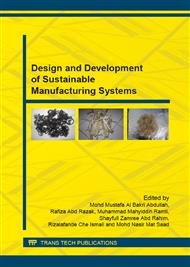p.116
p.121
p.131
p.136
p.141
p.148
p.153
p.158
p.164
High Throughput Graphene Oxide in Modified Hummers Method and Annealing Effect on Different Deposition Method
Abstract:
Graphene sheets offer extraordinary thermal, electronic and mechanical properties which could enhance the performance of the device for various applications. However, a large quantity production and the direct dispersion of graphene or graphite sheets in water without the assistance of dispersing agent has been considered to be a challenging issue. In this study, we reported that by introducing the functional group on the graphene basal plane started from natural graphite can readily form stable graphene oxide (GO) solution in a large quantity through modified hummers method. Structural and physiochemical properties of the GO were investigated with help of Atomic Force Microscopy (AFM), Scanning Electron Microscopy (SEM), Fourier Transform Infrared Spectroscopy (FTIR). The effects of the annealing treatment on a GO surface were analyzed using a Semiconductor Parameter Analyzer (SPA) in order to obtain the electrical resistance measurement. Based on the thermal reduction results, the resistance of drop casting is greater than spray coating which indicates that, the drop casting method is more reliable to be used in any application.
Info:
Periodical:
Pages:
141-147
Citation:
Online since:
November 2015
Keywords:
Price:
Сopyright:
© 2015 Trans Tech Publications Ltd. All Rights Reserved
Share:
Citation:


